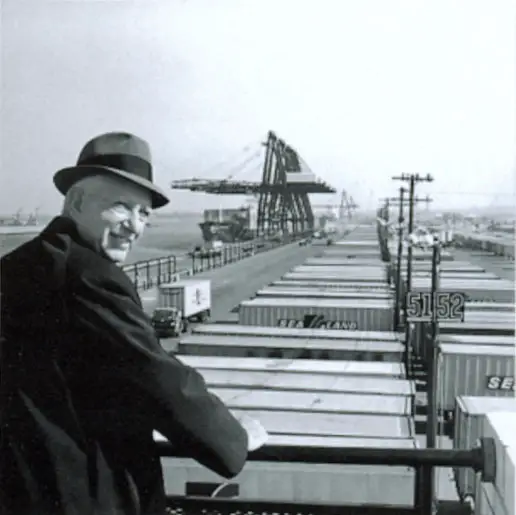Intermodal transport is a modality of carriage goods that put in combination one or more means of transportation.
Thanks to intermodal transport, it is possible to move goods and settle on the “ unity of cargo,” which can be rubber, iron, water, or air.
Intermodal transport is also called multimodal transport; the main goal of this type of transport is to reduce the carriage of goods by rubber.
The advance of intermodal transport is that there is a reduction in transportation cost, and the emission for our planet will be less.
Let’s discover how intermodal transport works:
Page Contents
What is the intermodal transport?

For answers to this, what is the intermodal transport, we can take a lot of definition.
The main and the most authoritative answer is that one that we found on the Europian Communion union,
On the document Terminology on combined transport:
Intermodal transport is the movement of goods on the same unity of cargo or on the same road vehicle that uses two or more transportation means.
THE ADVANCE ON THE INTERMODAL TRANSPORT
The use of more means of transportation, such as intermodal transport, can bring in your mind that more vehicles are equal to more cost against unimodal transport.
In reverse, the possibility of transporting goods organized on standard unity of cargo focused on a big terminal for logistics. Onboard of means with hight capacity, for long-distance and cost per unity of distance reduced, had offered the possibility to reduce transport costs.
Intermodal transport, is a flexible system.
It allows transporting goods of every type, thanks to the standardization of unity of cargo think to the container intermodal.
The intermodal transport can be combined with different means of transporting: rubbers-iron, rubber-water, rubber-air.
On the point of economic view, the intermodal transport reduce the cost of transportation with a major efficiently on
the combined means of transport.
THE HISTORY OF INTERMODAL TRANSPORTATION
The concept of intermodal is not so recent.
In the 50 years with the opening of international trade, start the exigency to transport different goods in a better and efficient manner.
Before this, a first experiment was conducted in the second world war.
The military of the united state was usually carriage goods with wood bases the so-named pallet.
At that time, this was offering some advance like the transporting of goods was more secure, and it needs minor time.
But this experiment was spread very rapidly, but it did not bring the true intermodal transporting to real.
THE CONTAINER: THE REVOLUTION OF THE INTERMODAL TRANSPORTING
To achieve the complete realization for intermodal transport, we had to wait until the mid-1950s.
In 1956 a businessman of the goods sector, Malcolm McLean, found a solution.

While he was waiting for the goods’ transport from his means to the ship, he thought that was more fast embarking the entire camion.
Thanks to his intuition born the container, simply iron box, that can offer different advance.
Consider to read : Containers design
The first advance is an increase secure on the transport, second a fast operation regarding the loading and unloading.
Starting from that, McLean starts to understand the immense potentiality of the intermodal transporting.
THE SUCCESS OF THE INTERMODAL TRANSPORTING
The success of the intermodal transporting was not only the intuition of the intermodal container.
But the idea of adapting the component of transporting of the container itself; trucks, trains, tower crane, ships, ports, and so on.
In 1967 The IMO gave guidelines for the standard model, the so-named container ISO.
With a width of 244 centimeters, an hight of 259 centimeters and a length of 610 or 1220 centimeters .
Thanks to this number, the fixing of the different means of transporting offers efficiency to security and velocity.
The classic container was not the only to be utilized in the years we assist in the born of the tanks container, reefer container, and so on that give more power to the intermodal transporting.
